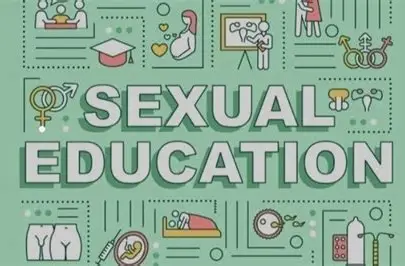Herein this article, we discussed What is Comprehensive Sex Education (CSE)? What Works in CSE, What Doesn’t Work, The Way Forward: Investing in Comprehensive Sex Education.
Sex education is one of the most debated aspects of youth development—and for good reason. It sits at the intersection of health, culture, values, and personal development. But as the conversations heat up, one truth remains clear: young people deserve accurate, inclusive, and practical information about their bodies, relationships, and sexuality.
What is Comprehensive Sex Education (CSE)?
Comprehensive Sex Education goes beyond the old-school “birds and bees” talk. It covers a wide range of topics including:
. Anatomy and reproduction
. Consent and communication
. Contraception and STI prevention
. Gender identity and sexual orientation
. Healthy relationships
. Body image and media literacy
CSE is age-appropriate, medically accurate, culturally responsive, and inclusive of all sexual orientations and gender identities. It’s not about encouraging sex—it’s about equipping young people to make informed choices.
What Works in CSE
- Medically Accurate and Evidence-Based Content
Programs grounded in science and public health data produce the most positive outcomes. Research shows that students who receive accurate sex education are more likely to:
. Delay the initiation of sexual activity
. Use protection when they do become sexually active
. Have fewer unintended pregnancies and STIs
- Focus on Consent and Communication
Teaching about consent, boundaries, and healthy communication empowers youth to respect themselves and others. These lessons reduce rates of sexual assault and promote healthier relationships—romantic or otherwise.
- Inclusivity
LGBTQ+ youth often feel invisible or excluded in traditional sex ed. Inclusive programs not only affirm diverse identities but also improve mental health outcomes and reduce bullying.
- Parental and Community Involvement
Programs that engage parents and communities in respectful dialogue tend to build trust and reduce resistance. When caregivers are brought into the loop, students get consistent messaging and support.
- Skills-Based Learning
Information alone isn’t enough. Effective CSE includes real-life skills—how to say no, how to negotiate condom use, how to access services, and how to critically evaluate online content.
What Doesn’t Work
- Abstinence-Only Education
Despite decades of funding and political support, abstinence-only programs have been largely ineffective. They are often:
. Rely on fear or shame-based tactics
. Omit crucial information about contraception and STIs
. Leave young people unprepared when they do become sexually active
The result? Higher rates of unintended pregnancy and sexually transmitted infections.
- One-Size-Fits-All Curriculum
Cultural, social, and developmental differences matter. Programs that fail to adapt to local realities often fall flat. For example, a curriculum designed for urban teens may not resonate with rural youth or different cultural groups.
- Outdated or Biased Materials
Materials that stigmatize sexuality, gender identity, or contraception undermine trust and limit learning. Educators must keep content current and inclusive—or risk alienating students entirely.
- Lack of Trained Educators
Even the best curriculum fails when delivered by someone uncomfortable or untrained. CSE educators need support, professional development, and tools to navigate sensitive discussions.
- Ignoring Digital Realities
Today’s youth live online. Sexting, online porn, and social media pressure are real aspects of their sexual development. Ignoring these topics creates a dangerous knowledge gap.
The Way Forward: Investing in Comprehensive Sex Education
The evidence is clear: comprehensive sex education is a vital component of a well-rounded education. It empowers young people with the knowledge, skills, and confidence to make informed decisions, protect their health, and build healthy relationships. Moving forward, it’s essential for communities, schools, and policymakers to:
. Prioritize and implement evidence-based CSE curricula.
. Ensure educators are adequately trained and supported.
. Engage parents and the community in discussions about CSE.
. Advocate for policies that support comprehensive approaches to sex education.
By investing in comprehensive sex education, we invest in the health, safety, and well-being of our young people and, ultimately, in the future of our communities.
Conclusion: It’s Time to Get Real
Comprehensive Sex Education is not about encouraging sexual activity—it’s about promoting safety, empathy, and responsibility. When done right, it helps young people build not just knowledge, but confidence, respect, and agency.

